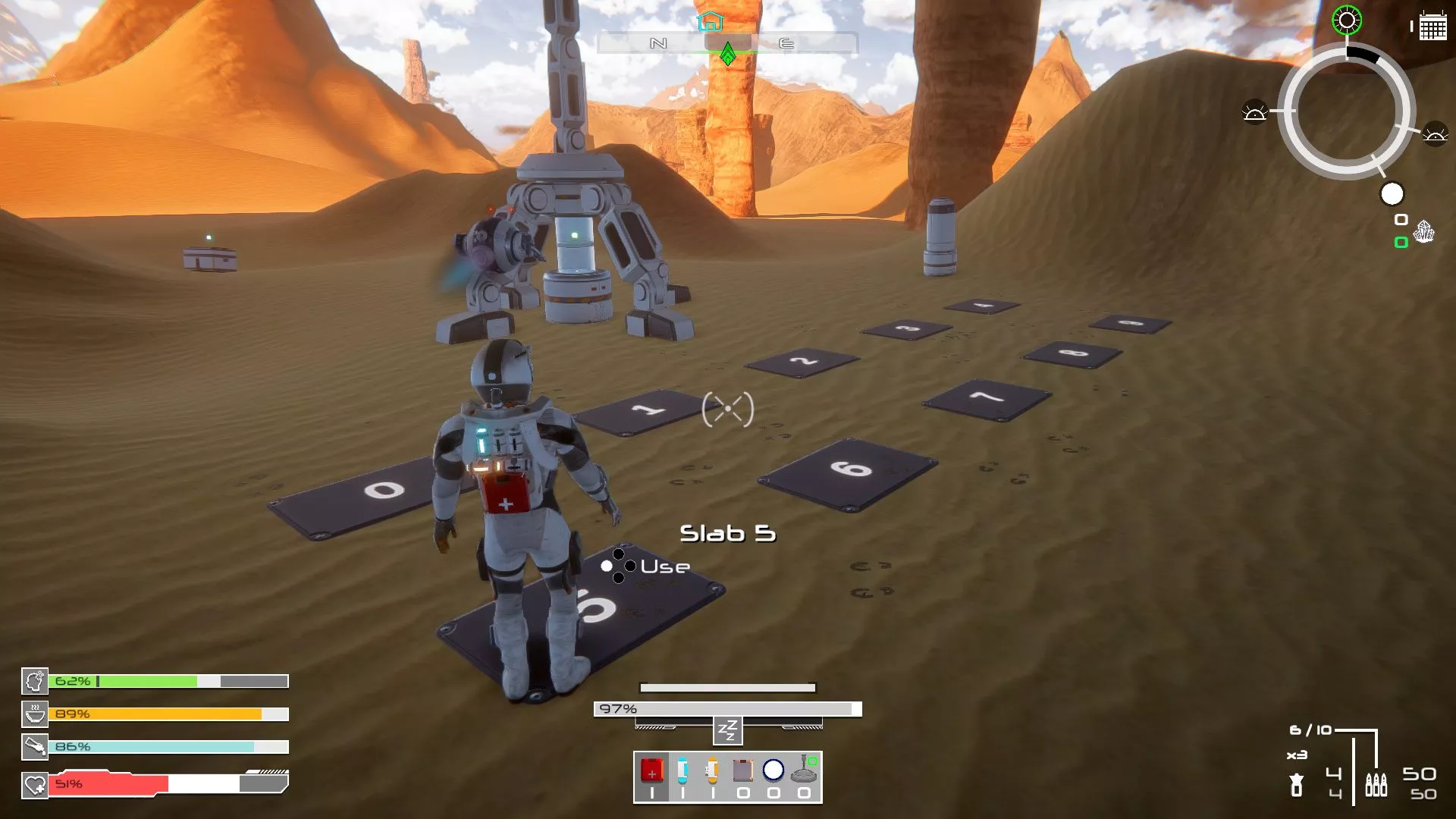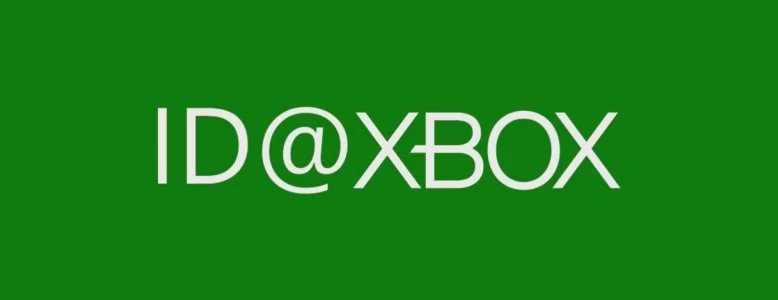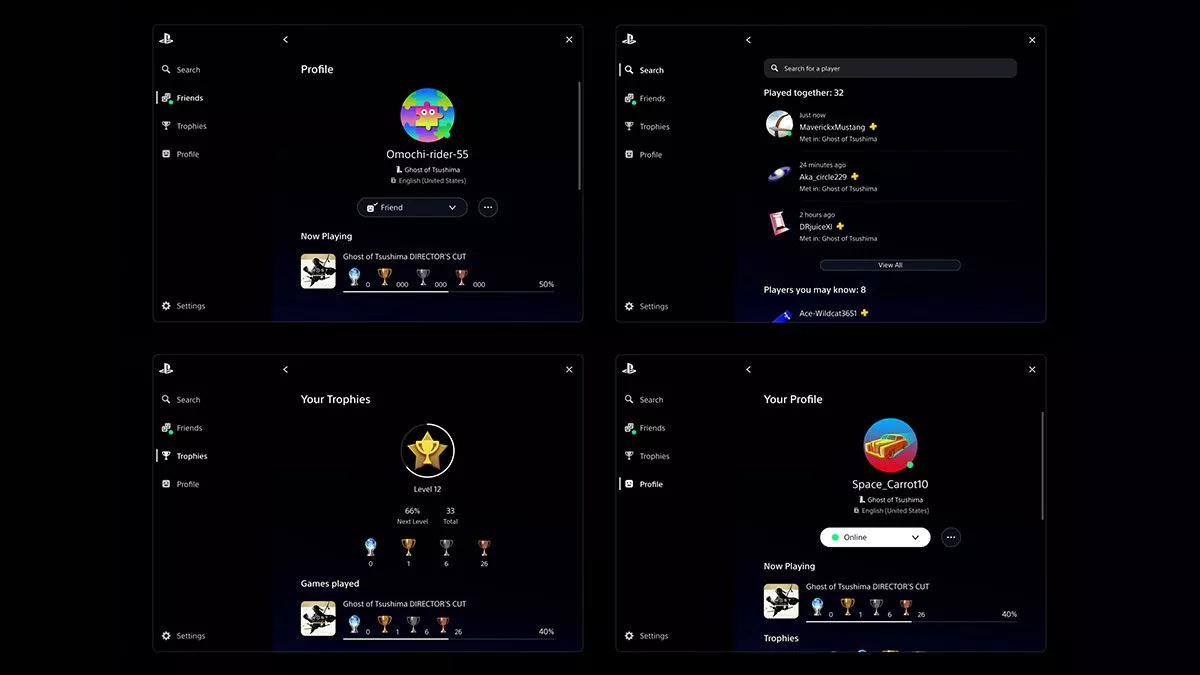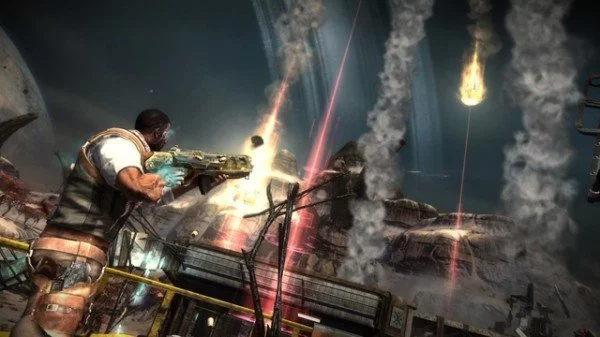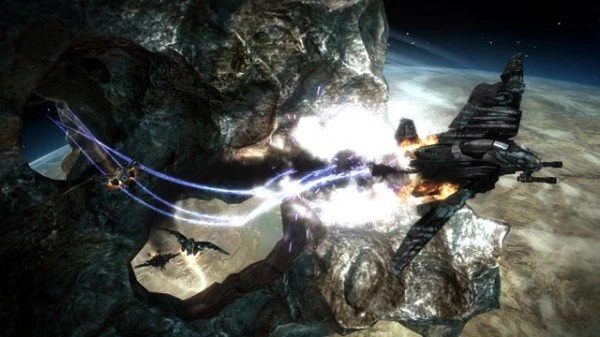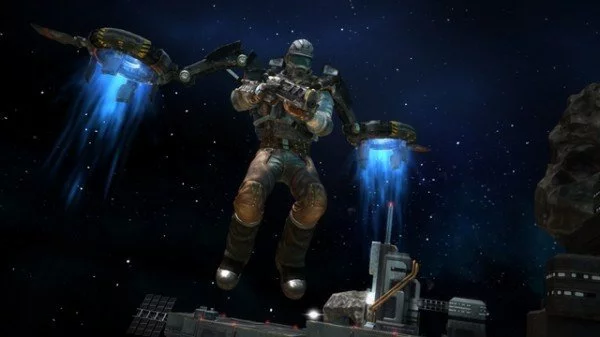Starhawk is a 3rd person shooter like no other. At first glace it appears to be like a myriad of other shooters on the market however, it’s so much more. Sure, there’s the gruff protagonist with the troubled past, the grizzled battle worn sidekick, token love interest and a clever setting, in Starhawk’s case it’s a Cowboy Bebop-esque sci-fi western world. But soon after booting up the first level any pre-conceptions quickly fade as the depth of the game gradually reveals itself. Starhawk is a game of spectacle, breathtaking battles and chaotic shifts in gameplay that keep the player on their toes at all times. Lightbox Interactive took some very big risks in the creation of Starhawk and it has payed dividends. Successfully melding 3rd person shooting, RTS style strategy and air/space combat is no mean feat yet in Starhawk the elements come together in perfect harmony and create a gameplay experience like no other.
Trying to describe Starhawk is a difficult task. Saying it’s a shooter where you get to create buildings and units on the battlefield and then take off in a jet and start a dogfight sounds cool, but it doesn’t really do Starhawk justice. Yes, you can do all of those things, but its they way the game introduces you to each of these elements and you gradually develop confidence with the mechanics that truly make Starhawk shine. The story is tissue thin and involves space bandits, a desert town on the brink of death and betrayal between brothers. It’s very “genre-lite” but it get’s the job done.
You begin your story on the planet of “Dust” (yes, the naming is all very cliched too), fending off an attack by the “scabs” who have become infected by and addicted to “Rift” energy, the equivalent of “Spice” in the “Dune” series. As you defeat enemies you acquire Rift energy which enables you to call in orbital drops in real time. These drops include walls, turrets, sniper towers, alliance outposts and the like. As you progress through the levels your sidekick piloting your ship in space gives you constant updates of the enemies movements. Essentially telling you what is coming, where they’ll be and when they’ll be arriving. An icon appears on screen at the location of impending enemies with a timer. This is where the Build and Battle system comes into it’s own. Generally, you’ll be given 30 seconds to prepare before a wave of enemies arrives and you really need to make the most of it. Do you build a row of walls with turrets on top to hold back the advancing horde? Do you build outposts which contain additional allies? Do you construct a sniper tower and try to take out the scabs from afar? Or, do you try a mixture of all available units? Starhawk gives you the freedom to play your way and is so cleverly designed that there is never really a wrong way to move forward.
Not all gameplay in Starhawk takes place on the ground. Many times during missions, enemy aircraft or “hawks” will zero in on your location and you will need to take to the skies to fend them off. The transition from ground to air is seamless and with the push of a button you can switch from walking to flying. Flying controls are intuitive and easy to get to grips with and the space/air battles are adrenaline filled, deliciously destructive affairs.
It becomes apparent about partway through the 10 story missions that the single player campaign is a boot camp for the multiplayer portion of the game. You may notice that I included “focus on MP” as a negative in this review. This may be misleading, as the multiplayer element of Starhawk is an intense and fun-filled experience and by no means is the multiplayer lacklustre, I just wish that the single player had been given more attention, especially the story.
If the single player missions in Starhawk are chaotic and unpredictable, the multiplayer is simply insane. In a good way. While playing single player, only Emmet (the player character) has the ability to call in orbital drops, however in multiplayer there are potentially 32 builders, frantically trying to outdo everybody else to stay ahead. Every action you take in Starhawk is deliberate, planned and thought out. Nothing you do is random or arbitrary and every action made by you and every other player constantly shifts the battle in a raging tug of war that keeps everyone on edge.
Starhawk is a definite winner on the gameplay front and is no graphical slouch either. Character models are detailed and textures are crisp and bright. In fact for a game set in a dystopian future western the world is brightly coloured and lit. Particle effects abound and the frequent explosions look great as they send shattered enemies and debris into the air.
Where Starhawk fails is in its story. From the outset I failed to really connect with any of the characters and found myself half listening to the cutscenes and conversations about exactly why I was doing these missions. However, this speaks volumes about the gameplay, as even without knowing my motivation I gleefully charged into mission after mission. Story segments are told via semi animated comic book scenes between missions, which while looking cool and very stylish ultimately fail to gel with the graphical style of the main game creating an odd disconnect.
These are minor quibbles though as Starhawk truly is an innovative game that makes the most of its gameplay premise. It never gets dull or repetitive even over multiple playthroughs. The power given to you by the tools available means that every mission can be played in an almost unlimited number of ways. And once you’re ready to enter the multiplayer arena, say goodbye to your loved ones for a few weeks, you won’t be seeing each other for a while.
This article may contain affiliate links, meaning we could earn a small commission if you click-through and make a purchase. Stevivor is an independent outlet and our journalism is in no way influenced by any advertiser or commercial initiative.


